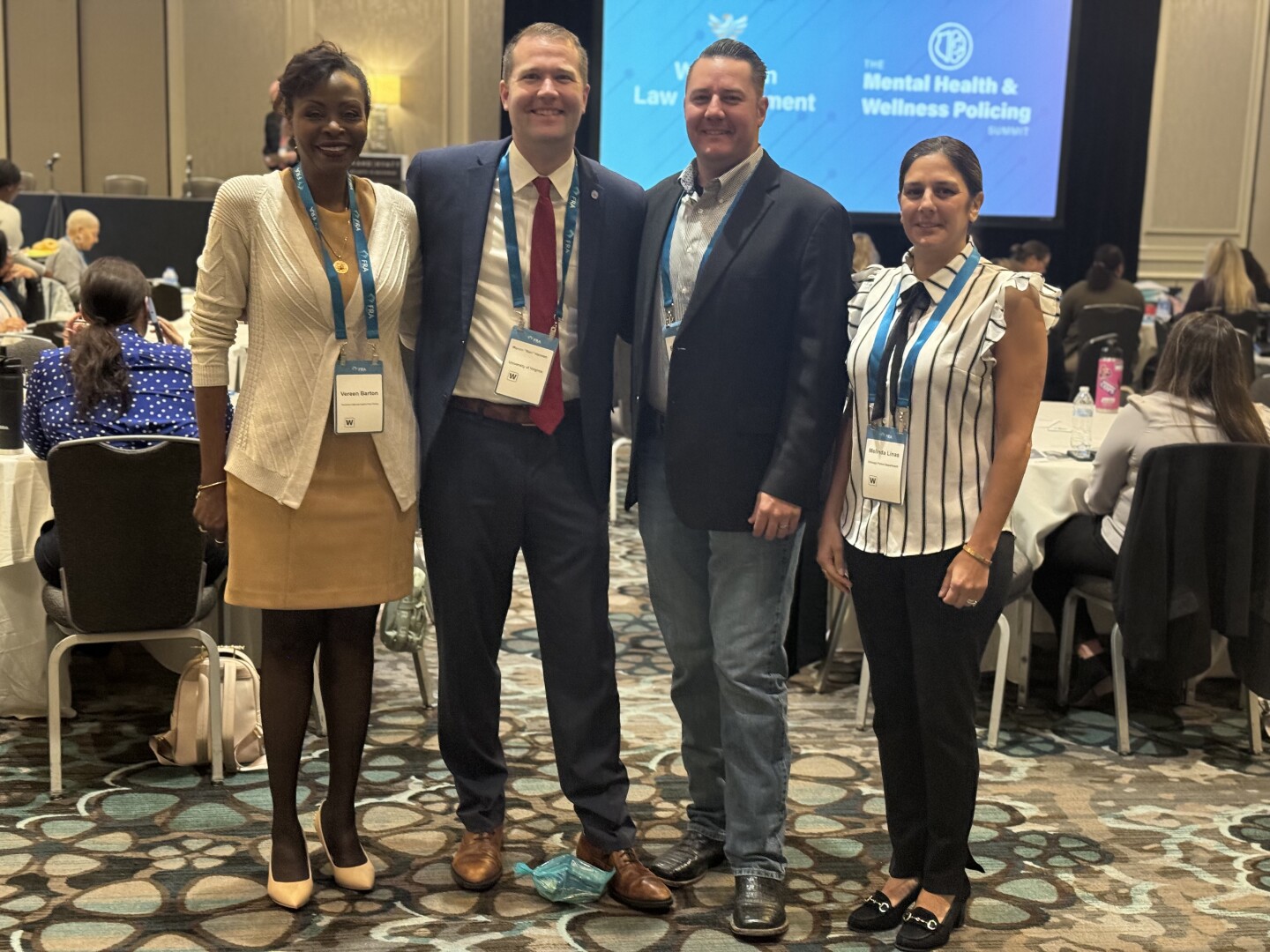Submitted by Center for Public Safety and Justice at the University of Virginia staff
Imagine culture as a fine line that divides what is tolerated and what is not within an organization. This line is malleable and shaped by leaders and members of an organization alike. In some organizations, this culture is positive and demonstrates great attributes like trust, resilience, psychological safety, integrity and transparency. In others, the culture tolerates behaviors that lead to toxic environments where organizations struggle to retain valuable employees.
At the 16th Women in Law Enforcement Conference, held October 17–19 in Atlanta, Georgia, a dynamic facilitated dialogue on organizational culture took center stage with over 200 leaders from across law enforcement.
The session, led by Marvin “Ben” Haiman, Executive Director of the Center for Public Safety and Justice at the University of Virginia, along with other distinguished panelists — Commander Melinda Linas of the Chicago Police Department, Chief of Police Rex Ingram of Caldwell (ID) Police Department and Assistant Chief Vereen Barton of Maryland-National Capitol Park Police — delved into actionable strategies for fostering cultural transformation in law enforcement agencies.
The workshop explored the essence of culture as a determinant of organizational behavior, with participants engaging in interactive activities designed to assess and evolve their organizations’ cultural norms.
“What do we tolerate?” exercise
Attendees used sticky notes to identify behaviors their organizations tolerate and those they do not, promoting reflection on unspoken cultural norms.
On the the wall of behaviors tolerated were words like laziness, disrespect, lack of leadership, entitlement, nepotism, “bro club,” profanity, bullying, retaliation, rumors, lack of punctuality, favoritism and dozens of other examples of the negative underbelly of law enforcement culture. While some positive words, such as openness to change or inclusivity, were included, the vast majority reflected a profession with significant cultural challenges. Participants reviewed these words and remarked, “Who would want to work in this type of environment?”
The wall of behaviors not tolerated included words like lying, tardiness, criminal acts, harassment, unprofessionalism, racism, unethical behavior, excessive force and others that align with cultural norms across agencies. These reflected far more positive aspects that one would hope and expect of law enforcement culture.
Participants were surveyed on how they rated their organizational culture. They rated the culture within their organizations at an overall average of 2.5 — a score that almost no one would accept if choosing a hotel or a restaurant online.
“Stop, start, continue” brainstorm
Participants then collaborated across their tables to consider current activities within their agencies that must be stopped to create culture change, items that should be started to drive positive cultural change and those positive efforts underway that must be continued. Participants rolled up their sleeves and discussed culture head-on. Officers from nearly every state shared their perspectives, and some amazing efforts of leadership and challenges to the status quo were heard.
Chief Rex Ingram, Chief of Police in Caldwell, Idaho, shared his challenges inheriting an understaffed organization with a culture that contained elements antithetical to what he believed would lead to successful community policing. Just a few years later, the organization had almost doubled in staff, morale had considerably improved and officers had a performance focus on serving their community.
Commander Melinda Linas of the Chicago Police Department asked all in attendance to pause for a moment of silence, recognizing another recently fallen officer — a testament to the realities and trials of those serving in policing. For a profession that requires so much, organizations must first take care of their members and ensure their mental health and wellness.
“While I do not believe higher education is mandatory to begin service as a police officer, I do believe that education is highly beneficial to continue to evolve the policing profession. Leaders and officers must continue to seek out education — whether through formal educational opportunities or informal training—to continue to grow, learn, and better their profession,” said Ben Haiman, Executive Director for the Center for Public Safety and Justice at the University of Virginia, while discussing how to improve the quality of organizations.
Assistant Chief Vereen Barton of Maryland-National Capitol Park Police shared many examples of how transparency and authenticity in leadership are key elements for building trust and a positive culture within law enforcement organizations.
The panel also fielded critical questions, including methods to measure cultural change and how to build trust and transparency within law enforcement departments while confronting deeply rooted practices. Insights from the session underscored the importance of transparency and the need to continue focusing on improving law enforcement culture to ensure this is a profession future generations will choose.
Next steps
The Women in Law Enforcement Conference made it clear: transforming culture starts with honest reflection and courageous leadership. What steps will your organization take to ensure a brighter future for its members and the communities they serve? Consider these actions:
- Encourage open dialogue to uncover unspoken cultural norms and address challenges head-on.
- Leverage collaborative exercises like the “What Do We Tolerate?” activity to identify behaviors that harm or help organizational growth.
- Prioritize mental health and wellness initiatives to support officers in high-stress professions.
- Commit to ongoing education — formal or informal — for both leaders and officers to adapt and improve.
- Promote transparency and authenticity in leadership to build trust and drive cultural transformation.
- Use data-driven assessments, such as culture surveys, to measure progress and guide future strategies.
- Celebrate positive efforts already in place to reinforce a foundation for cultural change.
NEXT: Chief Michael Kochis shares how earning a Master of Public Safety degree at UVA helped prepare him for the role of Chief of Police in Charlottesville, Virginia.



